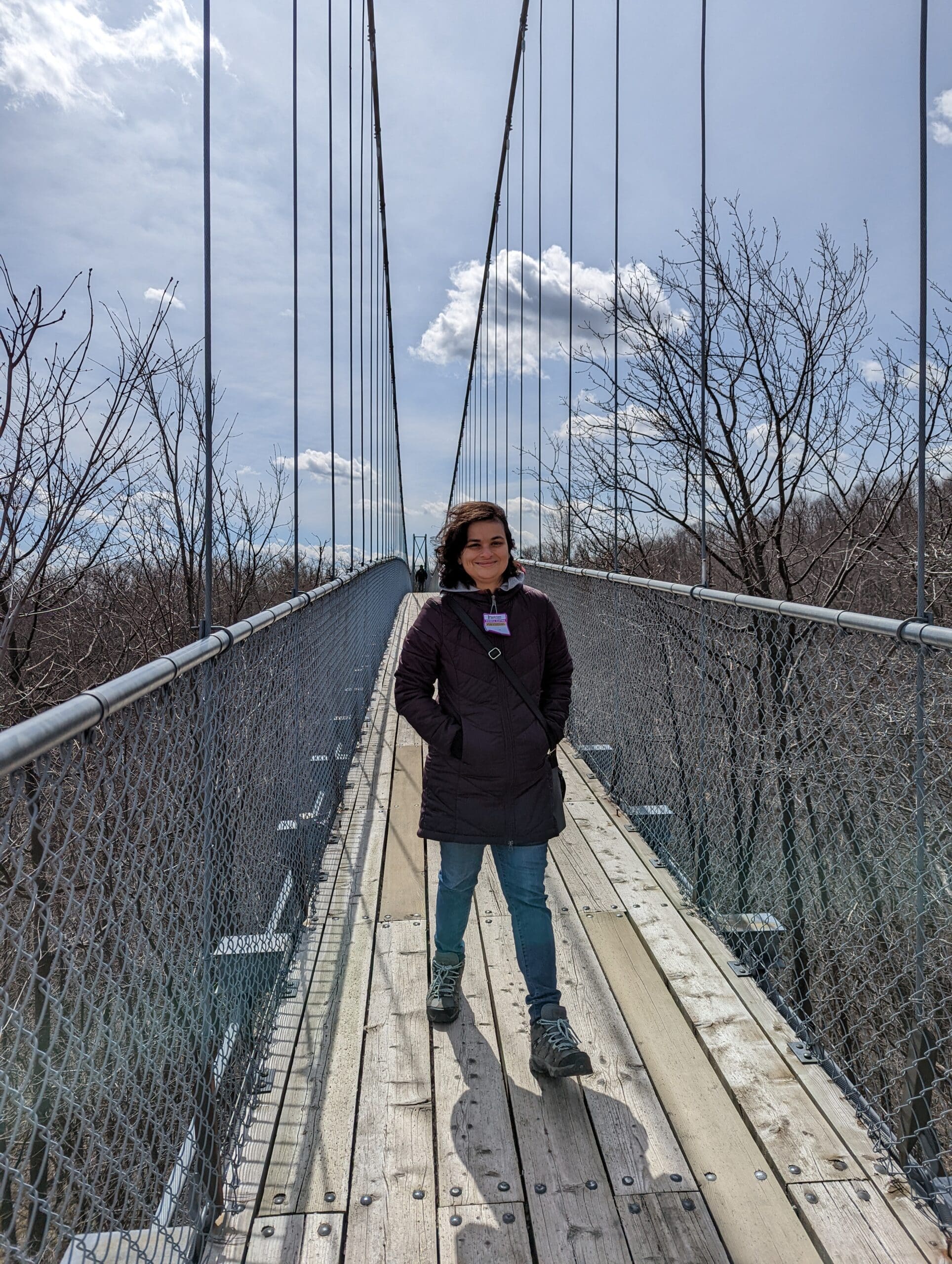Hello BRIGHT Run Family,
Hope you are enjoying the warmer and nicer temperatures. I was fortunate to have sunny weather on my recent trip to the Suspension Bridge at the Scenic Caves Nature Adventures at Blue Mountain.
The bridge is situated 82 feet above the forest floor and is 420 feet long. While I thoroughly enjoyed the view from the bridge, I felt happy and proud as an engineer to read about the rigour, science, and engineering that resulted in its sturdy design and safety.
On my way back, I was reflecting on the safety and effectiveness of engineering designs. Often an estimate of effort is provided by the unit called man-months (a person’s working time for a month). I wondered how many man-months might go into the design and implementation of a sturdy structure, considering challenges coming from the location, materials, time, budget, and available scientific knowledge!
That reminds me of an interesting and recent study1 and its corresponding editorial2 that I was reading last month. The study reviewed the performance of stand-alone machine learning (ML) applications that were designed for screening mammography workflow.
To elaborate, the authors studied several systematically derived scientific articles to determine (a) how capable are ML applications (compared to radiologists) while detecting breast cancer in patients who underwent screening mammography and (b) how good are ML applications to analyse mammography as the first expert and subsequently prioritise the second expert’s (human) workflow.
While they found that ML applications worked well in their limited experimental set-ups, they demonstrated the need for more rigorous experiments and testing for integrating these tools with the clinical care.
Thus, we will need to do better to enjoy the fruits of ML. The path looks tough but there are recent guidelines that will help us to identify problems and do better studies. Sometimes, we will need little out-of-the-box thinking/changing of plans to be able to so.
That’s what got the suspension bridge done with only minimally interference with trees. It’s not a traditional sag-type suspension bridge but its walkway arches in a parabolic shape upward over the forest.
I am working on/looking forward to building such bridges for our inter-disciplinary work with scientific prowess.
Stay safe and happy.
Ashirbani
Dr. Saha is the first holder of the BRIGHT Run Breast Cancer Learning Health System Chair, a permanent research position established by the BRIGHT Run in partnership with McMaster University.
References:
- Hickman, Sarah E., et al. “Machine learning for workflow applications in screening mammography: systematic review and meta-analysis.” Radiology 302.1 (2022): 88-104.
- Whitman, Gary J., and Tanya W. Moseley. “Stand-Alone Machine Learning: More Work Is Needed.” Radiology 302.1 (2022): 105-106.
